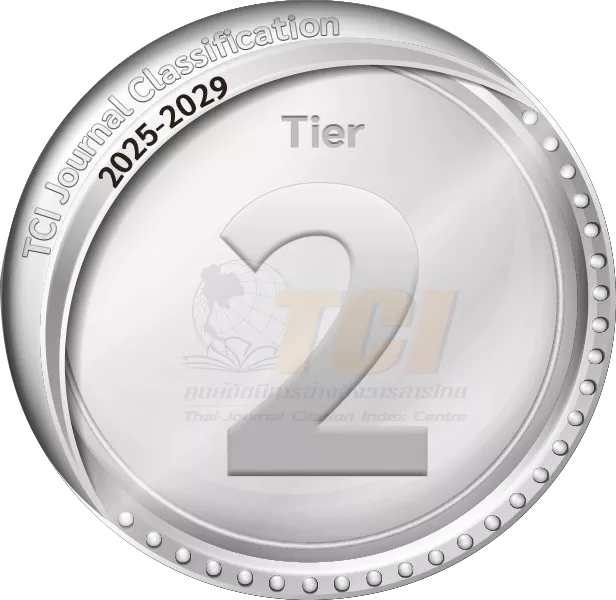Key Factors that Trigger Job Satisfaction and Their Implications on Employees’ Performance: A Case Study of ABC Company in the Democratic Republic of the Congo
DOI:
https://doi.org/10.14456/abacodijournal.2025.3Abstract
In recent years, the mining industry has played a significant role in job creation, technological advancements, global trade, and economic growth and development. This research seeks to identify and study the factors that trigger job satisfaction and their implications on employees’ performance in the mining industry of ABC company in the Democratic Republic of the Congo. With a population of 301 and a sample size of 243, the researchers gathered data and information from staff level employees at ABC company in Congo. The research applied both quantitative and qualitative methods. A quantitative survey questionnaire and interview questions were derived and adapted from existing literature using the Appreciative Inquiry Model (AI). The quantitative data were analyzed using descriptive statistics, along with multiple and simple linear regression, while qualitative data were analyzed through content analysis by thematic coding to identify key themes. This study intends to shed light on the impact of four independent variables: Leadership style, organizational culture, safety, compensation, on job satisfaction which impacts employees' performance. The findings indicate that job satisfaction significantly impacts employee performance and the organizational culture, safety, and leadership style in the current state impact job satisfaction. The researchers identify areas of limitation and make recommendations for future studies.
References
Alrawahi, S., Sellgren, S. F., Altouby, S., Alwahaibi, N., & Brommels, M. (2020). The application of Herzberg’s two-factor theory of motivation to job satisfaction in clinical laboratories in Omani hospitals. Heliyon, 6(9), e04829.
https://www.ncbi.nlm.nih.gov/pmc/articles/PMC7486437/
Anderson, V. (2004). Research Methods in Human Resource Management. CIPD.
Armstrong, M. (2010). Armstrong’s Essential Human Resource Management Practice—A Guide People Management. US Kogan Page.
Arnold, E. (2005). Managing Human Resources to Improve Employee Retention. Health Care Manager, 24, 132-140. http://dx.doi.org/10.1097/00126450-200504000-00006
Bicera, R. D. C., & Lamadrid, R. L. (2016). Job satisfaction in the structural steel detailing industry, Philippines. ABAC ODI Journal Vision. Action. Outcome, 3(2), 1-16. http://www.assumptionjournal.au.edu/index.php/odijournal/article/view/2285
Delve, S. (2024). Democratic Republic of Congo. Artisanal mining. https://www.delvedatabase.org/data/countries/democratic-republic-of-congo#:~:text=Copper%20and%20cobalt%20miners%20have,(BGR%202019%2C%2036).
Destari, Y., Lumbanraja, P., & Absah, Y. (2018). The influence of work satisfaction on employees’ performance with organizational commitment as an intervening variable at the Mining and Energy Agency of North Sumatera. International Journal of Research and Review, 5(12), 355-364.
https://www.ijrrjournal.com/IJRR_Vol.5_Issue.12_Dec2018/IJRR0053.pdf
Dziuba, S., Ingaldi, M., & Zhuravskaya, M. (2020). Employees' job satisfaction and their work performance as elements influencing work safety. System Safety Human-Technical Facility-Environment, 2(1), 18-25.
Geeks for Geeks. (2024). Herzberg’s two-factor theory of motivation. GeeksforGeeks. https://www.geeksforgeeks.org/herzbergs-two-factor-theory-of-motivation/
Geller, C. S. (2001). Safety. Springer.
file:///C:/Users/Admin/Downloads/10.1201_b20088_previewpdf%20(1).pdf
Gerhart, B., & Fang, M. (2015). Pay, intrinsic motivation, extrinsic motivation, performance, and creativity in the workplace: Revisiting long-held beliefs. Annual Review of Organizational Psychology and Organizational Behavior, 2, 489-521.
https://doi.org/10.1146/annurev-orgpsych-032414-111418
Govender, P. J., Garbharran, L. H., & Loganthan, R. (2012). Leadership style and job satisfaction: A developing economy perspective. Corporate Ownership and Control, 10(4), 390-399.
Herzberg, F. (1959). The Motivation to Work. John Wiley & Sons.
Ibrahim, M., & Brobbey, A. V. (2015). Impact of motivation on employee performance: The case of some selected microfinance companies in Ghana. International Journal of Economics, Commerce, and Management, 3(11), 1218-1236.
https://ijecm.co.uk/wp-content/uploads/2015/11/31177.pdf
Judge, T. A., & Piccolo, R. F. (2004). Transformational and Transactional Leadership: A Meta-Analytic Test of Their Relative Validity. Journal of Applied Psychology, 89, 755-768. http://dx.doi.org/10.1037/0021-9010.89.5.755
Kailay, M., Paposa, K., & Chhibber, P. (2023). A study on sustainable human resource management in healthcare sector: Instrument development and validation. The Academy of Management Annals, 16(2), 237-268.
Le, F., & Reuters, A. (2019). RDC: Au moins 36 morts dans l’effondrement d’une mine de cuivre et cobalt. Le Figaro. https://www.lefigaro.fr/flash-actu/rdc-au-moins-36-morts-dans-l-effondrement-d-une-mine-de-cuivre-et-cobalt-20190627
Li, X., & Tresirichod, T. (2024). The mediating role of job performance: The impact of organizational culture on job satisfaction. Journal of Arts Management, 18(2), 254-271. https://so02.tci-thaijo.org/index.php/jam/article/view/269071/180496
Maheho, D. (2021). Kolwezi: Accident de travail: KCC enregistre deux morts parmi ses travailleurs. La Guardia. https://magazinelaguardia.info/2021/10/29/kolwezi-accident-de-travail-kcc-enregistre-deux-morts-parmi-ses-travailleurs/
Mensah, K. B. E., & Tawiah, K. A. (2016). Employee motivation and work performance: A comparative study of mining companies in Ghana. Journal of Industrial Engineering and Management, 9(2), 255-309.
Muttalib, A., Danish, E. M., & Zehri, W. A. (2023). The impact of leadership styles on employee’s job satisfaction. Research Journal of Society Issues, 5(2), 133-156. https://www.researchgate.net/publication/372055462_The_Impact_of_Leadership_Styles_on_Employee's_Job_Satisfaction
Rattanaparinyanon, S., & Tantasanee, S. (2019). A proposed HR plan to enhance employee motivation: A case of MTA State Enterprise, Thailand. ABAC ODI Journal Vision. Action. Outcome, 6(2), 71-98.
http://www.assumptionjournal.au.edu/index.php/odijournal/article/view/3439
Schein, E. H. (2010). Organizational Culture and Leadership (4th ed.). Jossey-Bass.
Sheridan, B., & Luo, G. (2012). RUMM2030: Rasch Unidimensional Models for Measurement. RUMM Laboratory.
Stone, S. (2022). The EV boom is being fueled by underpaid, underfed cobalt miners. The Verge. https://www.theverge.com/2022/2/15/22933022/cobalt-mining-ev-electriv-vehicle-working-conditions-congo
Straub, D., Bouderau, M. C., & Gefen, D. (2004). Validation guidelines for IS positivist research. Communications of the Association for Information Systems, 3(1), 1-70. https://www.researchgate.net/publication/228783869_Validation_Guidelines_for_IS_Positivist_Research
Suharno, S., Sarjana, K. P., & Muchtar, M. (2017). Factors affecting employee performance of PT Kiyokuni Indonesia. International Journal of Law and Management, 59(4), 1-14. https://www.researchgate.net/publication/317207269_Factors_Affecting_ Employee_Performance_of_PT_Kiyokuni_Indonesia
Taber, K. S. (2018). The use of Cronbach’s alpha when developing and reporting research instruments in science education. Research in Science Education, 48, 1273-1296. https://link.springer.com/article/10.1007/s11165-016-9602-2
Tangthankul, V. (2024). Factors affecting customer satisfaction in ride-hailing application: A case of top three ride-hailing apps in Bangkok. ABAC ODI Journal Vision. Action. Outcome, 6(2), 1-17.
Wardana, K. P., Sugiharto, E., Yuansa, F. K., & Syamil, A. (2023). Factors influencing job performance in the mining industry: An empirical study at PT Pamapersada Nusantara. International Journal of Entrepreneurship and Business Development, 6(5), 1000-1013. file:///C:/Users/Admin/Downloads/2380-Article%20Text-8445-2-10 20231005%20(1).pdf
Winstanely, G. (2024). Employee disengagement: navigating the disconnect. Mentorloop. https://mentorloop.com/blog/employee-disengagement/



